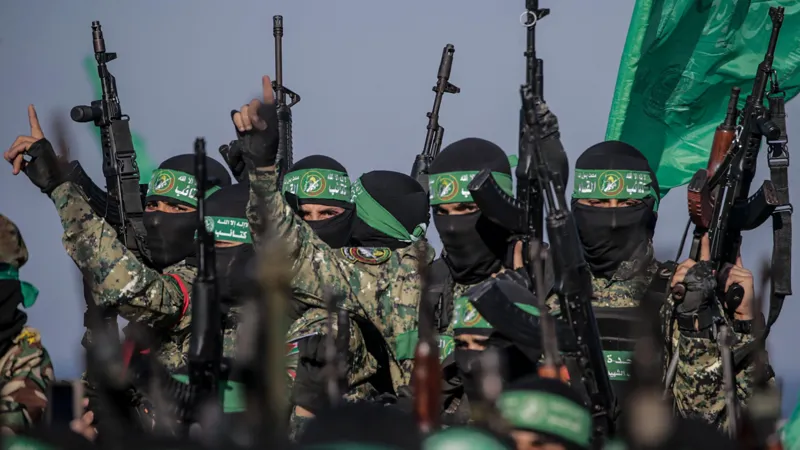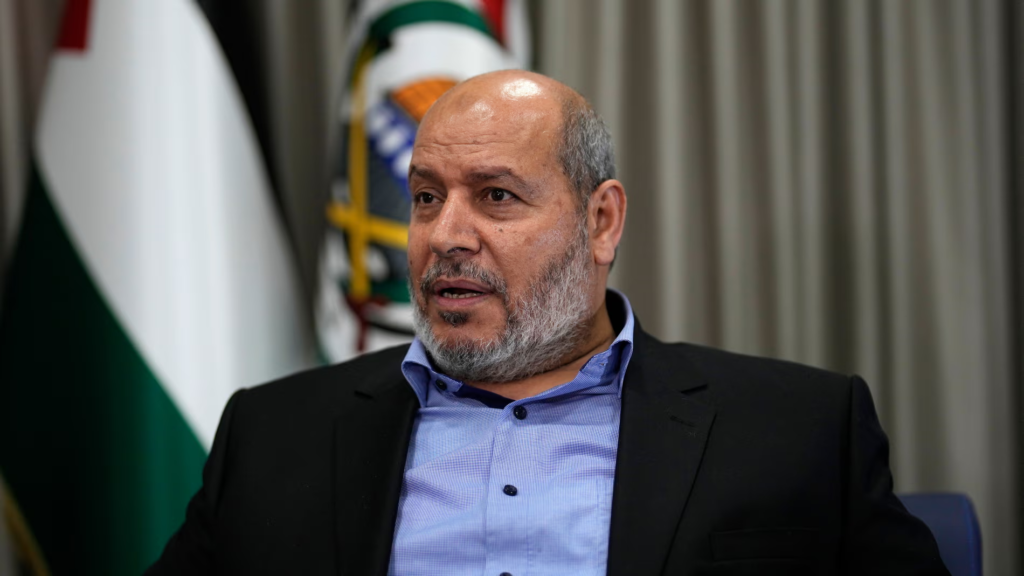Hamas Rejects Israel’s Latest Ceasefire Proposal
Hamas, the Palestinian militant group controlling Gaza, has formally rejected Israel’s most recent ceasefire proposal, dashing hopes for an immediate halt to the escalating violence in the Israel-Gaza conflict.

The rejection, announced on Friday, underscores the deep mistrust and irreconcilable demands between the two sides, as the war, now in its 18th month, continues to exact a devastating toll on civilians.
Details of the Rejected Proposal
Israel’s latest offer, presented earlier this week through Egyptian and Qatari mediators, proposed a 45-day ceasefire in exchange for the release of 10 hostages held by Hamas.[ politics news ]
The plan also included demands for Hamas to discuss disarmament and a temporary redeployment of Israeli forces within Gaza, rather than a full withdrawal.
However, Hamas dismissed the proposal as inadequate, insisting on a “comprehensive” deal that would end the war entirely, secure a complete Israeli military withdrawal from Gaza, and facilitate the release of all remaining hostages in exchange for Palestinian prisoners.
Khalil al-Hayya, a senior Hamas official leading the group’s negotiations, accused Israel of using partial agreements to mask a political agenda aimed at “continuing the war of extermination and starvation.”
Hamas has consistently rejected any proposal requiring its disarmament, viewing it as a “red line,” and reiterated its readiness to release all hostages in a single deal if Israel commits to ending hostilities.
Development and Initiation of the Proposal
The ceasefire proposal emerged from indirect talks mediated by Egypt and Qatar, with the United States playing a supporting role.
The initiative followed a meeting between Israeli Prime Minister Benjamin Netanyahu and U.S. President Donald Trump in Washington, where discussions focused on reviving stalled negotiations.

Egyptian mediators expressed cautious optimism earlier this week, suggesting a deal could be reached within weeks, but Hamas’s swift rejection has dimmed prospects for an immediate breakthrough.
The proposal was part of a broader effort to restore a ceasefire that collapsed in March 2025, after a brief period of calm.
Israel resumed military operations, launching airstrikes and ground incursions to pressure Hamas into accepting revised terms that favored Israel.
However, Hamas has accused Israel of violating previous agreements and imposing a humanitarian blockade to force concessions.
Background of the Israel-Gaza War
The current conflict traces its roots to Hamas’s October 7, 2023, attack on southern Israel, which killed approximately 1,200 people, mostly civilians, and saw 251 individuals taken hostage into Gaza.
Israel’s retaliatory offensive, aimed at dismantling Hamas’s military and governance structures, has transformed Gaza into a battleground, with widespread destruction of infrastructure and a spiraling humanitarian crisis.
Israel’s stated objectives include the complete disarmament of Hamas and the release of all hostages, while Hamas demands an end to Israel’s military presence in Gaza and the lifting of the blockade that has restricted food, water, fuel, and medicine since March 2, 2025.
The war has drawn international condemnation, with the United Nations and humanitarian organizations warning of a “famine phase” in Gaza and potential breaches of international humanitarian law.
Previous Ceasefire Agreements and Their Breakdown
A significant ceasefire agreement, brokered by the U.S., Egypt, and Qatar, took effect in late January 2025, marking a two-month period of relative calm.
The three-phase deal facilitated the release of some hostages and allowed nearly 450,000 tons of humanitarian aid into Gaza. However, the agreement unraveled in March when Israel sought to renegotiate terms for the second phase, which envisioned a permanent end to the war.
Hamas accused Israel of backtracking, while Israel claimed Hamas failed to comply with disarmament and hostage release commitments.
The breakdown led to Israel’s resumption of airstrikes and ground operations, including the establishment of the “Morag corridor” to bisect Gaza and intensify pressure on Hamas. The blockade imposed on March 2 halted all aid deliveries, exacerbating the humanitarian crisis. Hamas has since offered to release all hostages in exchange for a permanent ceasefire, but Israel’s insistence on maintaining security control over Gaza has stalled negotiations.
The January ceasefire’s effectiveness was limited by its temporary nature and lack of mutual trust. While it provided temporary relief for Gaza’s 2.2 million residents, the failure to transition to a permanent deal left underlying tensions unresolved.
Impact on People
The war’s toll is staggering. According to Gaza’s Hamas-run Ministry of Health, over 51,000 Palestinians have been killed since October 2023, with more than 1,700 deaths reported since March 18, 2025.
The majority of casualties are civilians, including women and children, with recent strikes targeting displaced families in tent camps, such as the April 16 attack in al-Mawasi that killed at least 37 people. BBC News

In Israel, the October 7 attack and ongoing rocket fire from Gaza have disrupted life, particularly in southern communities.
Of the 251 hostages taken, 59 remain in Gaza, with 24 believed to be alive. Families of hostages have staged protests in Israel, demanding a deal to secure their release, while polls show strong public support for a ceasefire but skepticism about its feasibility.
The humanitarian situation in Gaza is dire. The blockade has led to a complete halt in food, water, fuel, and medicine deliveries, pushing the enclave into what Hamas calls a “famine phase.”
Hospitals are overwhelmed, with recent strikes targeting medical facilities, including a field hospital in Khan Younis where a medic was killed.
The UN has warned that Gaza’s humanitarian crisis is the worst in 18 months, with 2.2 million people facing displacement, starvation, and lack of medical care.
Hostility and Public Sentiment
Hostility between Israel and Hamas remains entrenched, with both sides accusing the other of obstructing peace. In Israel, far-right figures like Finance Minister Bezalel Smotrich have called for escalating military action, with Smotrich stating it was time to “open the gates of hell” on Hamas.

Advertisement/ Reuters
Meanwhile, Hamas’s rhetoric frames Israel’s actions as a “war of extermination,” rallying support among Palestinians who view the blockade and airstrikes as collective punishment.
Public sentiment in Gaza is marked by despair and anger, with residents like those in al-Mawasi describing unimaginable loss after strikes on civilian areas.
In Israel, families of hostages and their supporters have clashed with the government, accusing Netanyahu of prioritizing military goals over their loved ones’ lives.
International pressure is mounting, with the EU’s foreign minister calling for renewed aid and Egypt’s President Abdel Fattah al-Sisi urging additional guarantees for a truce.
Recent Developments
The rejection of the ceasefire proposal coincides with intensified Israeli military operations. On April 17, strikes in Gaza City’s Tuffah neighborhood killed dozens, while a hospital in Deir al-Balah was hit, forcing patients to flee.
Hamas has dispatched a delegation to Qatar to continue indirect talks, signaling a willingness to negotiate but only on terms that meet its core demands.
Meanwhile, Israel’s Defense Minister Israel Katz has vowed to expand the offensive, warning that failure to release hostages will lead to unprecedented force.
The international community remains divided. The U.S. has backed Israel’s right to pressure Hamas but faces criticism for not enforcing a permanent ceasefire. Egypt and Qatar continue to mediate, but sources indicate that “the same elements preventing a deal remain in place.”
Outlook
As Hamas and Israel dig in, the prospects for peace appear slim. The war’s devastating impact on civilians, coupled with the failure of previous ceasefires, highlights the urgent need for a sustainable resolution.
Yet, with both sides entrenched in their positions—Israel demanding Hamas’s destruction and Hamas insisting on a full withdrawal the cycle of violence shows no signs of abating.
For the people of Gaza and Israel, caught in the crossfire, the cost of this impasse continues to grow.
This report is based on information from BBC News, CNN, NPR, Reuters, and Al Jazeera, among other sources, reflecting developments up to April 18, 2025.

